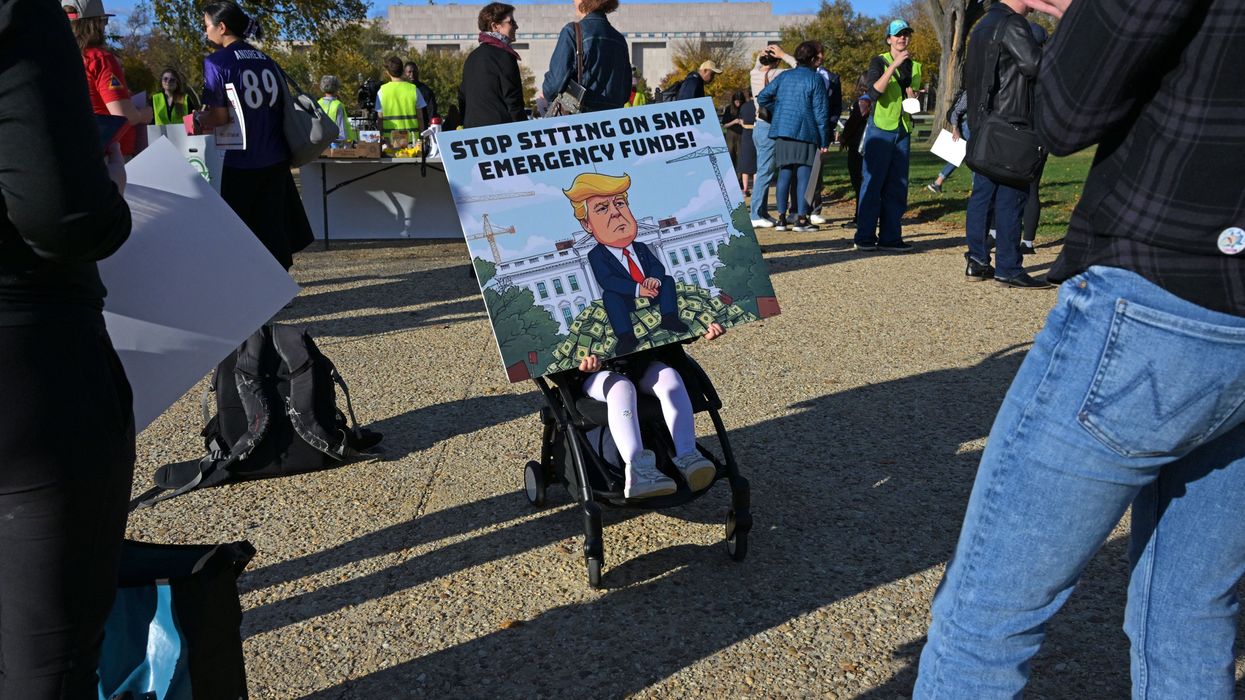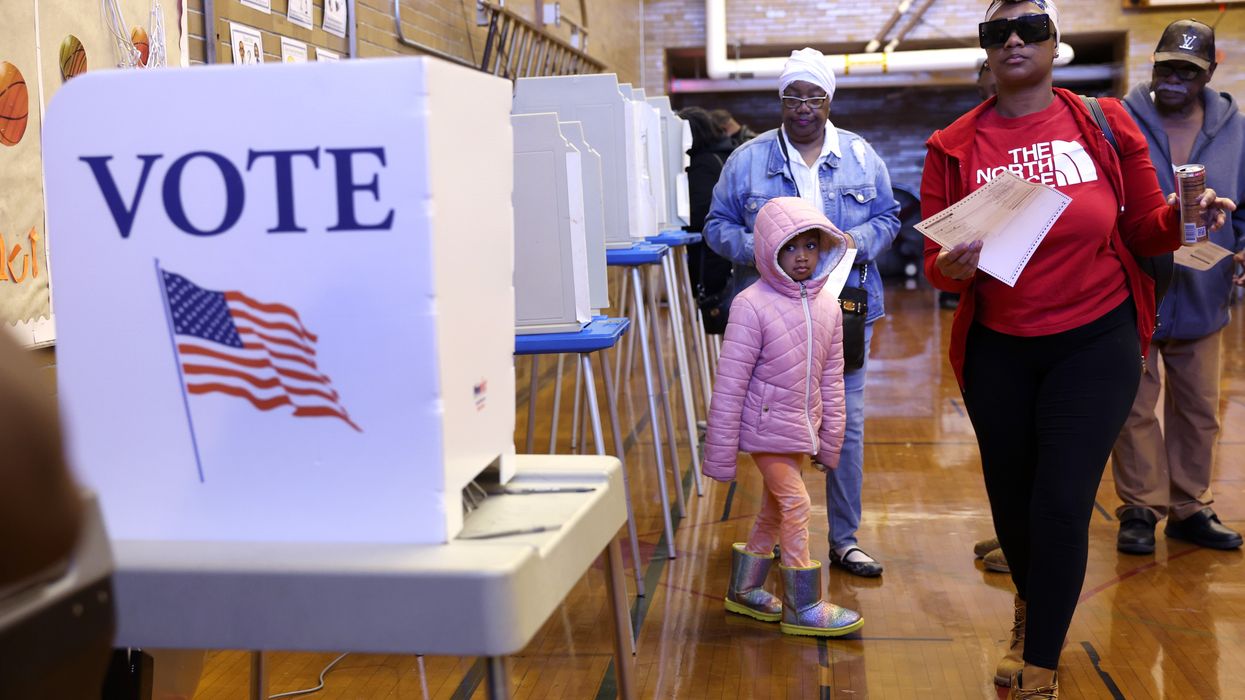August, 22 2008, 04:47pm EDT
For Immediate Release
Contact:
Andrea Keller Helsel, NPCA
202.454.3332
National Parks Conservation Association Launches New Public Service Ad Campaign
Calls on New Congress, Administration for National Park Funding, Protections
WASHINGTON
The nation's leading voice for the national parks, the
nonprofit National Parks Conservation Association (NPCA) today
announced the launch of its 2008 "Our National Parks" public service advertising campaign,
which features actors Amy Madigan and Sam Waterston, and calls on the
American public for help in encouraging greater federal funding for
national park upkeep and protection.
"Our national parks: the Washington Monument, Petrified Forest,
Yosemite, Mesa Verde, and many others, are national treasures," said
NPCA President Tom Kiernan. "We need action to protect them for our
children and grandchildren."
The new print and radio public service advertisements, developed by
the PlowShare Group, Inc., will be distributed to magazines,
newspapers, and radio stations nationwide. The radio spots include two
generously recorded by actors Amy Madigan and Sam Waterston, both of
whom also provided voice-over talent for filmmaker Ken Burns' new
documentary about America's national parks, planned for release in fall
2009.
In NPCA's public service ads, the public is encouraged to visit
npca.org to sign a petition to Congress and the incoming Administration
to seek their support for restoring our national parks in time for the
park system's 2016 centennial. The petition will be delivered in
February.
In a 2008 nationwide survey
conducted by Peter Hart Research Associates, 83 percent of respondents
indicated that it was extremely or quite important for the federal
government to protect and support national parks such as Yellowstone,
the Grand Canyon, and the Everglades.
Yet, as NPCA's new public service campaign points out, chronic
federal funding shortfalls have put national parks nationwide at risk.
While Congress has provided some increased funding, parks such as the
National Mall continue to suffer from inadequate investment. At the
Mall, $350 million is needed for maintenance and preservation of the
monuments, historic buildings, and parkland, and for visitor services
and signage. Nationwide, national parks struggle with a cumulative
backlog of maintenance needs of nearly $9 billion.
NPCA's campaign also features Petrified Forest National Park in
Arizona, which is at risk of residential and commercial development
within its boundaries because the National Park Service doesn't have
the needed funds to acquire land from willing sellers. Landowner Mike
Fitzgerald has been holding out for the Park Service to buy his
"scientifically valuable" land for years; he warned the Christian Science Monitor newspaper in July that he may be forced to sell to a developer.
According to NPCA's recent report, America's Heritage: For Sale,
the Park Service needs nearly $2 billion to acquire 1.8 million acres
of priority lands within the boundaries of national parks nationwide,
including Santa Monica Mountains National Recreation Area in Southern
California, Valley Forge National Historical Park in Pennsylvania,
Virgin Islands National Park in the U.S.V.I, and New River Gorge
National River in West Virginia.
"Americans expect the federal government to take care of our
national parks," said Kiernan. "We'll be looking to the new
Administration and Congress to fulfill that promise."
Next week, NPCA is convening the first meeting of the National Parks Second Century Commission,
a body of distinguished private citizens that is conducting a broadly
inclusive dialogue over the next 18 months about national parks, their
values, and role in society. The meeting will be held at Santa Monica
Mountains National Recreation Area, on August 24-27.
NPCA is a non-profit, private organization dedicated to protecting, preserving, and enhancing the U.S. National Park System.
LATEST NEWS
ICE's 'Frightening' Facial Recognition App is Scanning US Citizens Without Their Consent
"An ICE officer may ignore evidence of American citizenship—including a birth certificate—if the app says the person is an alien," said the ranking member of the House Homeland Security Committee.
Nov 01, 2025
Immigration agents are using facial recognition software as "definitive" evidence to determine immigration status and is collecting data from US citizens without their consent. In some cases, agents may detain US citizens, including ones who can provide their birth certificates, if the app says they are in the country illegally.
These are a few of the findings from a series of articles published this past week by 404 Media, which has obtained documents and video evidence showing that Immigration and Customs Enforcement (ICE) and Customs and Border Protection (CBP) agents are using a smartphone app in the field during immigration stops, scanning the faces of people on the street to verify their citizenship.
The report found that agents frequently conduct stops that "seem to have little justification beyond the color of someone’s skin... then look up more information on that person, including their identity and potentially their immigration status."
While it is not clear what application the agencies are using, 404 previously reported that ICE is using an app called Mobile Fortify that allows ICE to simply point a camera at a person on the street. The photos are then compared with a bank of more than 200 million images and dozens of government databases to determine info about the person, including their name, date of birth, nationality, and information about their immigration status.
On Friday, 404 published an internal document from the Department of Homeland Security (DHS) which stated that "ICE does not provide the opportunity for individuals to decline or consent to the collection and use of biometric data/photograph collection." The document also states that the image of any face that agents scan, including those of US citizens, will be stored for 15 years.
The outlet identified several videos that have been posted to social media of immigration officials using the technology.
In one, taken in Chicago, armed agents in sunglasses and face coverings are shown accosting a pair of Hispanic teenagers on bicycles, asking where they are from. The 16-year-old boy who filmed the encounter said he is "from here"—an American citizen—but that he only has a school ID on him. The officer tells the boy he'll be allowed to leave if he'll "do a facial." The other officer then snaps a photo of him with a phone camera and asks his name.
In another video, also in Chicago, agents are shown surrounding a driver, who declines to show his ID. Without asking, one officer points his phone at the man. "I’m an American citizen, so leave me alone,” the driver says. "Alright, we just got to verify that,” the officer responds.
Even if the people approached in these videos had produced identification proving their citizenship, there's no guarantee that agents would have accepted it, especially if the app gave them information to the contrary.
On Wednesday, ranking member of the House Homeland Security Committee, Rep. Bennie Thompson (D-Miss.), told 404 that ICE agents will even trust the app's results over a person's government documents.
“ICE officials have told us that an apparent biometric match by Mobile Fortify is a ‘definitive’ determination of a person’s status and that an ICE officer may ignore evidence of American citizenship—including a birth certificate—if the app says the person is an alien,” he said.
This is despite the fact that, as Nathan Freed Wessler, deputy director of the ACLU's Speech, Privacy, and Technology Project, told 404, “face recognition technology is notoriously unreliable, frequently generating false matches and resulting in a number of known wrongful arrests across the country."
Thompson said: "ICE using a mobile biometrics app in ways its developers at CBP never intended or tested is a frightening, repugnant, and unconstitutional attack on Americans’ rights and freedoms.”
According to an investigation published in October by ProPublica, more than 170 US citizens have been detained by immigration agents, often in squalid conditions, since President Donald Trump returned to office in January. In many of these cases, these individuals have been detained because agents wrongly claimed the documents proving their citizenship are false.
During a press conference this week, Homeland Security Secretary Kristi Noem denied this reality, stating that "no American citizens have been arrested or detained" as part of Trump's "mass deportation" crusade.
"We focus on those who are here illegally," she said.
But as DHS's internal document explains, facial recognition software is necessary in the first place because "ICE agents do not know an individual's citizenship at the time of the initial encounter."
David Bier, the director of immigration studies at the Cato Institute, explains that the use of such technology suggests that ICE's operations are not "highly targeted raids," as it likes to portray, but instead "random fishing expeditions."
Keep ReadingShow Less
Despite Court Rulings, Trump Refuses to Pay Out Food Stamp Benefits to Tens of Millions
"The administration has chosen to hold food for more than forty million vulnerable people hostage to try to force Democrats to capitulate without negotiations," says one Georgetown law professor.
Nov 01, 2025
Two federal judges have said the Trump administration cannot use the government shutdown to suspend food assistance for 42 million Americans. But hours into Saturday, when payments were due to be disbursed, President Donald Trump appears to be defying the ruling, potentially leaving millions unable to afford this month's grocery bills.
A pair of federal judges in Massachusetts and Rhode Island ruled Friday that the Department of Agriculture's (USDA) freeze on benefits from the Supplemental Nutrition Assistance Program (SNAP), also known as food stamps, was unlawful and that the department must use money from a contingency fund of $6 billion to pay for at least a portion of the roughly $8 billion meant to be disbursed this month.
“There is no doubt that the six billion dollars in contingency funds are appropriated funds that are without a doubt necessary to carry out the program’s operation,” said US District Judge McConnell of Rhode Island in his oral ruling. “The shutdown of the government through funding doesn’t do away with SNAP. It just does away with the funding of it. There could be no greater necessity than the prohibition across the board of funds for the program’s operations.”
McConnell added: “There is no doubt, and it is beyond argument, that irreparable harm will begin to occur if it hasn’t already occurred in the terror it has caused some people about the availability of funding for food for their family."
SNAP benefits are available to people whose monthly incomes fall below 130% of the federal poverty line. More than 1 in 8 Americans rely on the program, and 39% of them are children. According to USDA research, cited by the Washington Post, those who receive SNAP benefits rely on it for 63% of their groceries, with the poorest, who make below 50% of the poverty line, relying on it for as much as 80%.
McConnell shot down the administration's contention that the contingency funds may be needed for some other hypothetical emergency in the future, saying "It’s clear that when compared to the millions of people that will go without funds for food versus the agency’s desire not to use contingency funds in case there’s a hurricane need, the balances of those equities clearly goes on the side of ensuring that people are fed."
While the judge in Massachusetts, Indira Talwani, ruled that Trump merely had to use the contingency funds to fund as much of the program as possible, McConnell went further, saying that in addition, they had to tap other sources of funding to disburse benefits in full, and do so "as soon as possible." Both judges gave the administration until Monday to provide updates on how it planned to follow the ruling.
However, after the ruling on Friday, Trump insisted on social media that "government lawyers do not think we have the legal authority to pay SNAP with certain monies we have available, and now two courts have issued conflicting opinions on what we can and cannot do."
He added: "I do NOT want Americans to go hungry just because the Radical Democrats refuse to do the right thing and REOPEN THE GOVERNMENT. Therefore, I have instructed our lawyers to ask the Court to clarify how we can legally fund SNAP as soon as possible."
Attorney and activist Miles Mogulescu pointed out in Common Dreams that, "until a few days ago, even the Trump administration agreed that these funds should be used to continue SNAP funding during the shutdown."
On September 30, the day before the shutdown began, the USDA posted a 55-page "Lapse of Funding" plan to its website, which plainly stated that if the government were to shut down, "the department will continue operations related to... core nutrition safety net programs.”
But this week, USDA abruptly deleted the file and posted a new memo that concocted a new legal reality out of whole cloth, stating that “due to Congressional Democrats’ refusal to pass a clean continuing resolution (CR), approximately 42 million individuals will not receive SNAP benefits come November 1st.”
As Mogulescu notes: "The new memo cited absolutely no law supporting its position. Instead, it made up a rule claiming that the 'contingency fund is not available to support FY 2026 regular benefits, because the appropriation for regular benefits no longer exist.'"
Sharon Parrott, the president of the Center on Budget and Policy Priorities, who previously served as an official in the White House Office of Management, said last week that it's "unequivocally false" that the administration's hands are tied.
"I know from experience that the federal government has the authority and the tools it needs during a shutdown to get these SNAP funds to families," Parrott said. "Even at this late date, the professionals at the Department of Agriculture and in states can make this happen. And, to state the obvious, benefits that are a couple of days delayed are far more help to families than going without any help at all."
She added: "The administration itself admits these reserves are available for use. It could have, and should have, taken steps weeks ago to be ready to use these funds. Instead, it may choose not to use them in an effort to gain political advantage."
In hopes of pressuring Democrats to abandon their demands that Congress extend a critical Affordable Care Act tax credit and prevent health insurance premiums from skyrocketing for more than 20 million Americans, Republicans have sought to use the shutdown to inflict maximum pain on voters.
Trump has attempted to carry out mass layoffs of government workers, which have been halted by a federal judge. Meanwhile, his director of the Office of Management and Budget, Russell Vought, has stripped funding from energy and transportation infrastructure projects aimed at blue states and cities.
"Terminating SNAP is a choice, and an overtly unlawful one at that," says David Super, a constitutional law professor at Georgetown University. "The administration has chosen to hold food for more than forty million vulnerable people hostage to try to force Democrats to capitulate without negotiations.”
Keep ReadingShow Less
Judge Blocks Trump From Requiring Proof of Citizenship on Federal Voting Form
"Trump’s attempt to impose a documentary proof of citizenship requirement on the federal voter registration form is an unconstitutional power grab," said one plaintiff in the case.
Oct 31, 2025
A federal judge on Friday permanently blocked part of President Donald Trump's executive order requiring proof of US citizenship on federal voter registration forms, a ruling hailed by one plaintiff in the case as "a clear victory for our democracy."
Siding with Democratic and civil liberties groups that sued the administration over Trump's March edict mandating a US passport, REAL ID-compliant document, military identification, or similar proof in order to register to vote in federal elections, Senior US District Judge for the District of Columbia Colleen Kollar-Kotelly found the directive to be an unconstitutional violation of the separation of powers.
“Because our Constitution assigns responsibility for election regulation to the states and to Congress, this court holds that the president lacks the authority to direct such changes," Kollar-Kotelly, an appointee of former President Bill Clinton, wrote in her 81-page ruling.
"The Constitution addresses two types of power over federal elections: First, the power to determine who is qualified to vote, and second, the power to regulate federal election procedures," she continued. "In both spheres, the Constitution vests authority first in the states. In matters of election procedures, the Constitution assigns Congress the power to preempt State regulations."
"By contrast," Kollar-Kotelly added, "the Constitution assigns no direct role to the president in either domain."
This is the second time Kollar-Kotelly has ruled against Trump's proof-of-citizenship order. In April, she issued a temporary injunction blocking key portions of the directive.
"The president doesn't have the authority to change election procedures just because he wants to."
"The court upheld what we've long known: The president doesn't have the authority to change election procedures just because he wants to," the ACLU said on social media.
Sophia Lin Lakin of the ACLU, a plaintiff in the case, welcomed the decision as “a clear victory for our democracy."
"President Trump’s attempt to impose a documentary proof of citizenship requirement on the federal voter registration form is an unconstitutional power grab," she added.
Campaign Legal Center president Trevor Potter said in a statement: "This federal court ruling reaffirms that no president has the authority to control our election systems and processes. The Constitution gives the states and Congress—not the president—the responsibility and authority to regulate our elections."
"We are glad that this core principle of separation of powers has been upheld and celebrate this decision, which will ensure that the president cannot singlehandedly impose barriers on voter registration that would prevent millions of Americans from making their voices heard in our elections," Potter added.
Keep ReadingShow Less
Most Popular


